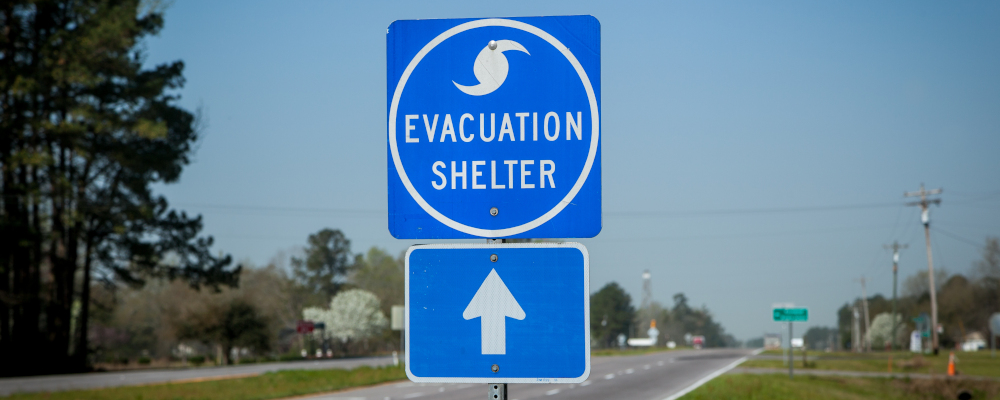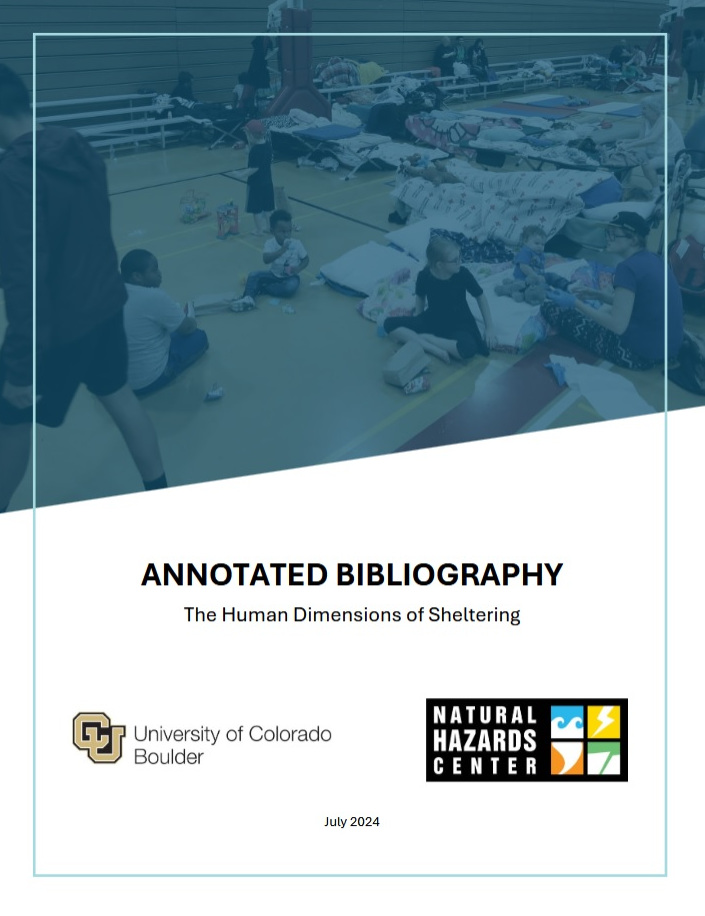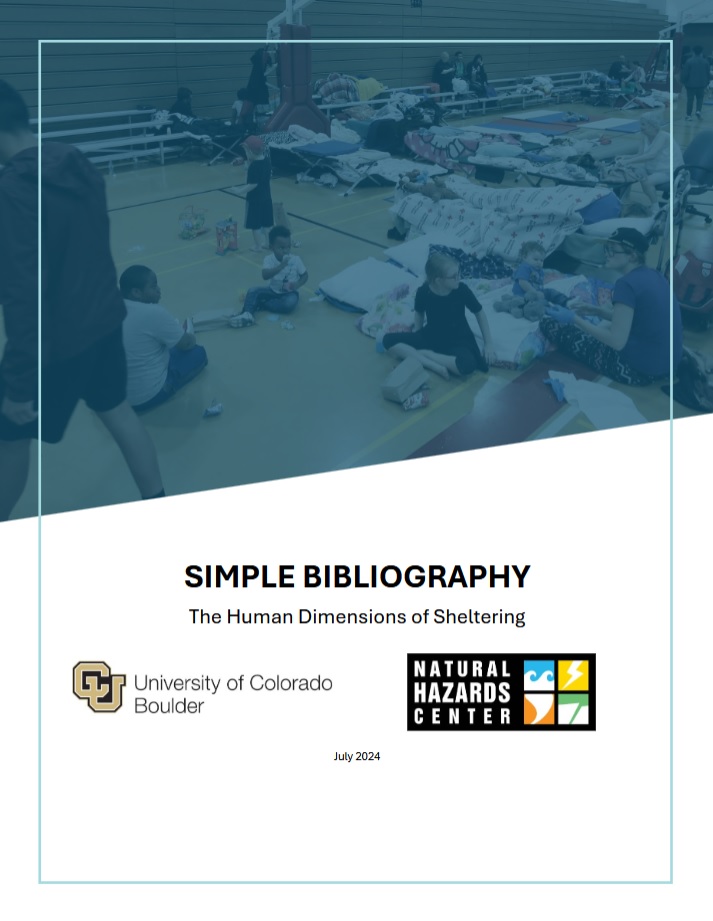The Human Dimensions of Sheltering: Social Science Considerations During Extreme Wind Events

What is the Challenge?
The Federal Emergency Management Agency (FEMA) has invested more than $1.4 billion dollars in building safe rooms and has refined building design criteria and construction practices to ensure these structures withstand wind hazards. To date, none of the 46,677 safe rooms built to federal standards has experienced a failure. However, even with this success, FEMA's understanding of when and why people access shelters and their experiences remain underexplored. Similarly, it is unknown if updating building designs and operation plans could improve shelter conditions and use. Critically assessing how people use shelters and what may be preventing their shelter use can help fill existing knowledge gaps and improve future structures.
Project Purpose
The intent of this work is to develop recommendations for the design and operations of storm shelters and safe rooms that are informed by social and behavioral science, specifically accounting for the human dimensions that influence shelter use and experiences. In this case, “human dimensions” include topics related to psychology and sociology, including physical and mental health, human behavior, decision-making, and experiences sheltering from extreme wind hazards. This work builds from a 2021 special collection of the Natural Hazards Center’s Research Counts series on Mass Sheltering and Disasters.
The Natural Hazards Center completed phase one of this project in the Fall of 2024 and is now working on phase two.
Phase One
In phase one, the NHC conducted an in-depth literature review to gather information on the human dimensions of sheltering from hurricanes, tornadoes, and other extreme wind hazards. The project produced a white paper that synthesizes findings from 105 social science articles and 13 federal agency reports published between 1999 and 2024. NHC developed both an annotated bibliography and a simple bibliography with relevant literature, which are provided below.
Findings in the white paper focus on the United States and U.S. territories and tribal nations. Findings include reasons people choose not to use shelters (e.g., lack of awareness of shelter locations, false sense of security at home, or having pets), challenges faced while sheltering (e.g., lack of privacy, unclear signage, or issues with lifelines), and systemic issues (e.g., lack of shelters or issues with long-term maintenance).
Recommendations are categorized to address the issues identified in the literature: (1) human-centered design, (2) operations, (3) planning and outreach, and (4) policy change. Policymakers, government agencies, and emergency managers can use these findings and recommendations to update shelter planning and policy, while researchers can use the identified research gaps to guide future research into social and psychological shelter experiences.
The annotated bibliography and simple bibliography summarize the literature that informed the writing of the white paper. The papers listed in the annotated bibliography include abstracts and are organized around the following themes (1) socially vulnerable populations and special needs, (2) psychological and emotional impacts, (3) policy, planning and preparedness, (4) evacuation and decision-making behavior, (5) public health and medical response, (6) pets and companion animals and (7) agency reports. The simple bibliography is organized alphabetically and only includes the citation.
Phase Two
In phase two of this project, the Natural Hazards Center is addressing specific gaps identified in phase one. The aims of this latest phase are to (1) assess how well existing safe rooms and storm shelters function and address population needs; and (2) determine what changes would improve shelter experiences and use. To accomplish these aims, the Center generated a sheltering checklist that includes best practices for shelter spaces as summarized in phase one. The checklist will be reviewed by experts from several organizations with an interest in safe and inclusive sheltering.
In 2025, the Center research team visited shelters in tornado- and hurricane-affected areas, using the checklist to assess shelters and interviewing shelter operators about their experiences.
The Center team is collaborating closely with engineers and architects who will use these findings to develop the next generation of shelter designs that incorporate social science best practices. Outcomes of this work will include a best practice shelter design checklist, a summary report, trial shelter designs, and recommendations for how to improve current safe room and storm shelter designs. Researchers can use these insights to explore improving protective behavior, like taking shelter and understanding who are most at risk. Policymakers and engineers can use this work to develop shelter guidance, policies, and designs.
Project Support
This work was made possible with support from FEMA, the Applied Technology Council (ATC), and the Natural Hazards Center. FEMA provided funding for this effort through the Earthquake and Wind Programs Branch Architectural & Engineering support contract. ATC provided project contracting support and oversight.
Project Team
Project Lead: Carson MacPherson-Krutsky, Natural Hazards Center, University of Colorado Boulder (Carson.M-K@colorado.edu) (Phases One and Two)
Research Associate: Jessica Austin, Natural Hazards Center (Phase Two)
Research Associate: Mary Angelica Painter, Natural Hazards Center (Phase Two)
Graduate Research Assistant: Musabber Ali Chisty, Natural Hazards Center (Phase Two)
Project Advisors:
Pataya Scott, Federal Emergency Management Agency (Phases One and Two)
Daniel Bass, Federal Emergency Management Agency (Phase One)
Jon Heintz, Applied Technology Council (Phases One and Two)
Michael Valley, Applied Technology Council (Phase Two)
Lori Peek, Natural Hazards Center (Phases One and Two)


